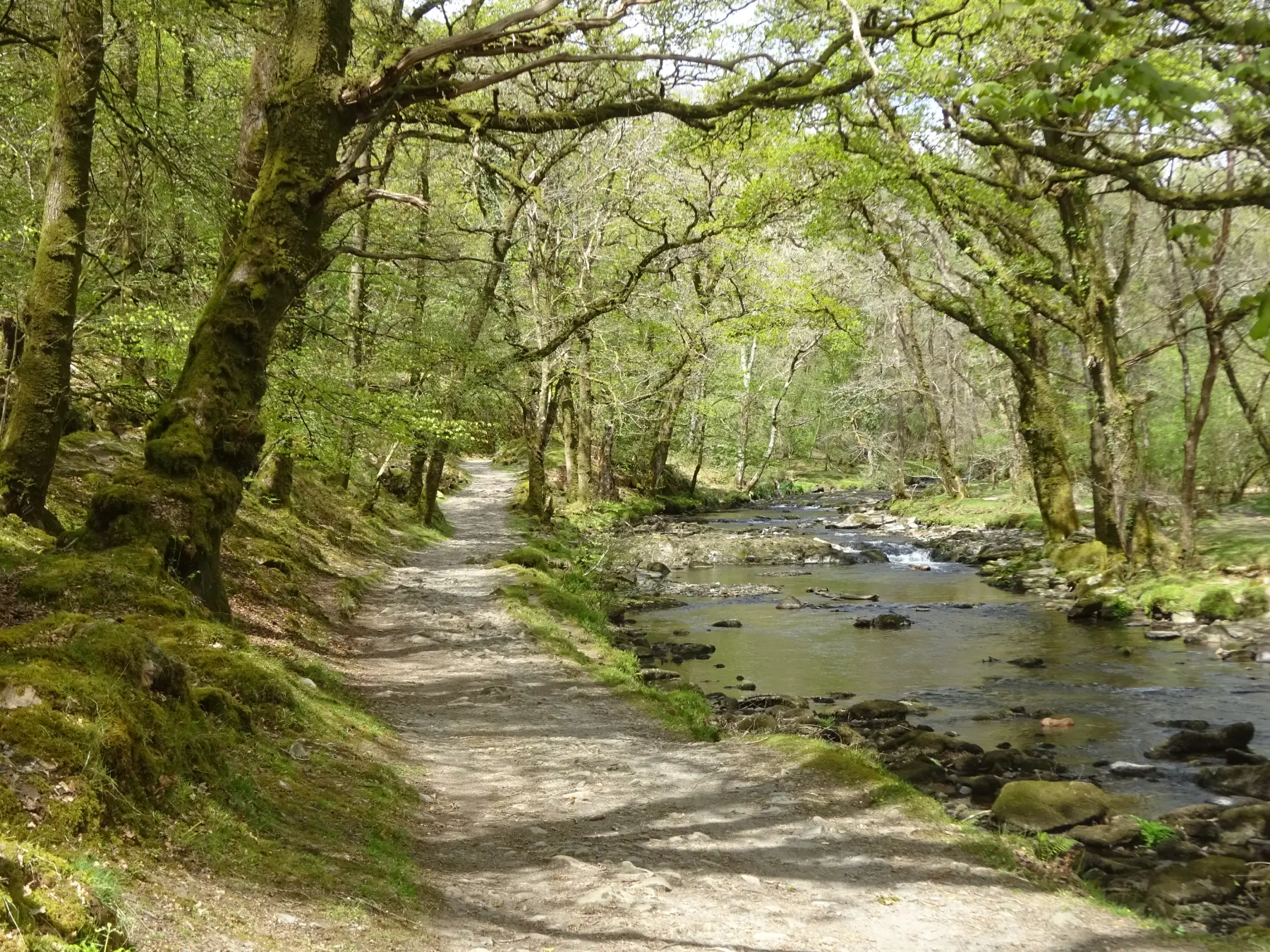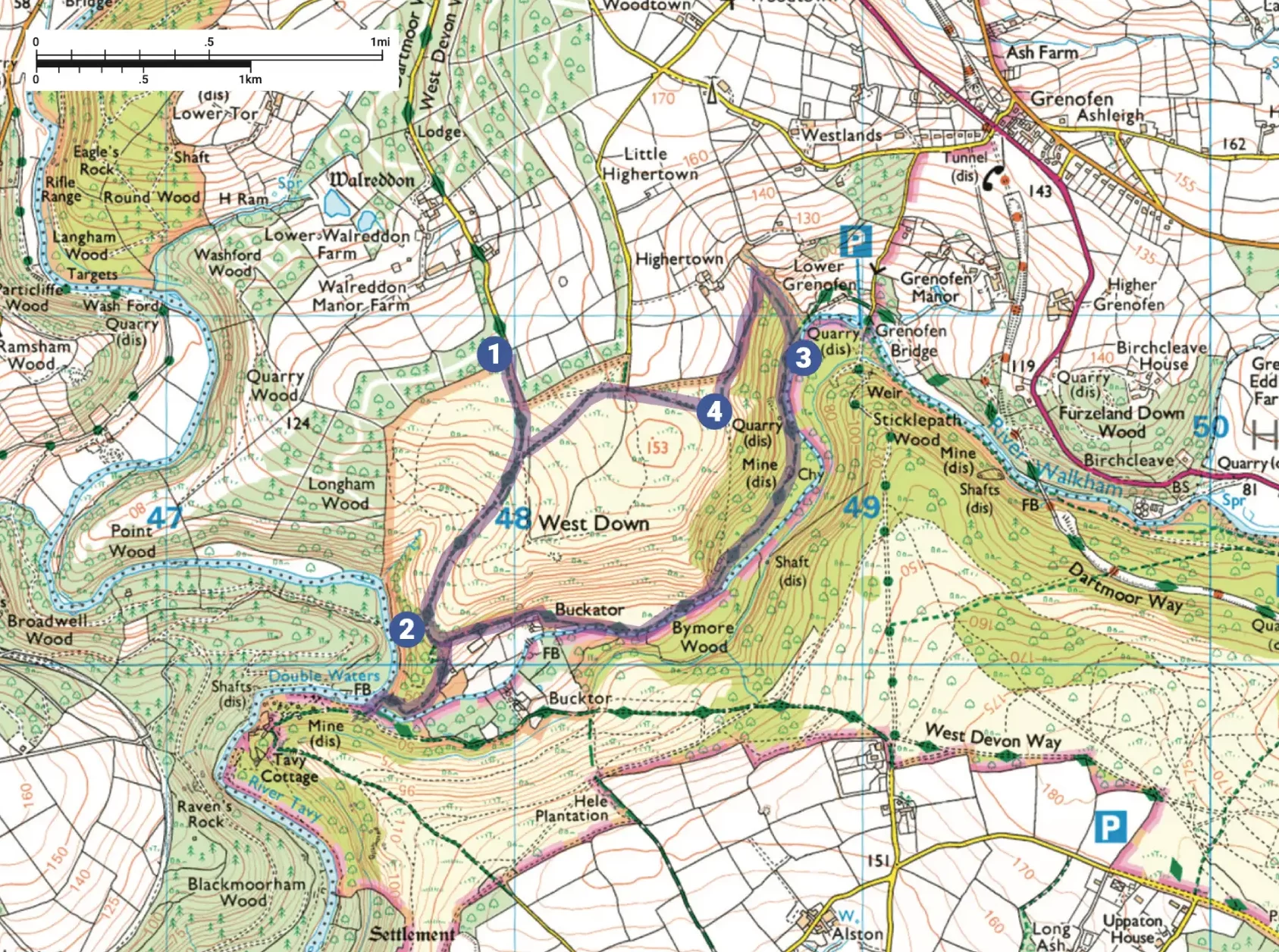The Dartmoor Way bears left, but for Double Waters turn right on a bridlepath track that zigzags steeply downhill to reach the river. Head downstream, passing under lofty oak trees, towards the confluence of the two rivers. On reaching an island bear right and ascend between the two stacks of Goat Rock, to reach Double Waters (near a footbridge over the Walkham).
Just below the confluence, on the Devon side of the valley, lie the remains of the Virtuous Lady Mine, an initially profitable copper mine which operated from at least 1724 until final closure in 1879.
Retrace your steps to the bridlepath junction and turn right, signed to Buckator. On reaching a parking area beyond a house bear right, down to the river, then follow the rough and rooty riverside path upstream. The river is beautiful here, cutting a rocky way through the valley via waterfalls and deep pools.
Pass below the monumental outcrop of non-granite Raven Rock, which towers above the path. Look out for remnants of walls and industrial buildings – including the calciner or ‘burning house’ – and eventually pass the old engine shaft chimney stack of West Down Mine, a failed tin and copper mine which operated for 10 years from 1847.
The hummocks near the river, formed of water-smoothed pebbles, are evidence of tin streaming. A massive retaining wall alongside the path marks the boundary of Lower Grenofen elvan quarry, which produced kerbstone for London streets in Victorian times.
Elvan is quite rare, and a ‘soft’ stone, popular with sculptors because it can be finely carved.







